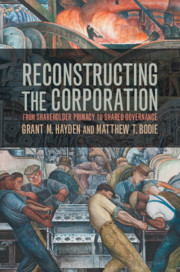7 results
2 - The many facets of social choice theory
- from Part I - Social Choice and Capabilities
-
-
- Book:
- Social Choice, Agency, Inclusiveness and Capabilities
- Published online:
- 28 March 2024
- Print publication:
- 14 March 2024, pp 17-41
-
- Chapter
- Export citation
ARROW’S THEOREM, ULTRAFILTERS, AND REVERSE MATHEMATICS
- Part of
-
- Journal:
- The Review of Symbolic Logic , First View
- Published online by Cambridge University Press:
- 29 February 2024, pp. 1-24
-
- Article
-
- You have access
- Open access
- HTML
- Export citation
7 - The Argument from Arrow’s Theorem
-
- Book:
- Reconstructing the Corporation
- Published online:
- 18 February 2021
- Print publication:
- 11 March 2021, pp 103-121
-
- Chapter
- Export citation
Social choice problems with public reason proceduralism
-
- Journal:
- Economics & Philosophy / Volume 38 / Issue 1 / March 2022
- Published online by Cambridge University Press:
- 24 February 2021, pp. 51-70
-
- Article
- Export citation

Reconstructing the Corporation
- From Shareholder Primacy to Shared Governance
-
- Published online:
- 18 February 2021
- Print publication:
- 11 March 2021
13 - Social Choice and the Capability Approach
- from Part II - Methods, Measurement and Empirical Evidence
-
-
- Book:
- The Cambridge Handbook of the Capability Approach
- Published online:
- 11 November 2020
- Print publication:
- 19 November 2020, pp 253-270
-
- Chapter
- Export citation
Impossible by design? Fairness, strategy, and Arrow’s impossibility theorem
-
- Journal:
- Design Science / Volume 3 / 2017
- Published online by Cambridge University Press:
- 23 February 2017, e2
-
- Article
-
- You have access
- Open access
- HTML
- Export citation








